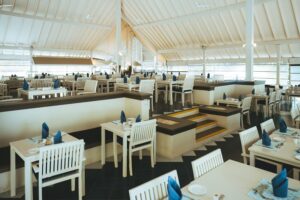
Home » Interdisciplinary learning in Architecture

Interdisciplinary learning in Architecture
Architecture education has been and will always remain interdisciplinary.. the art of designing spaces which overviews every profession, every activity . but what are the advantages of interdisciplinary learning?. Interdisciplinary learning allows students to develop an awareness of the interconnectedness that exist among the disciplines, and between disciplines and the real-world application of knowledge. It motivate students that what they are learning has immediate real-world application. Cross-curricular research connects students to an authentic real-world experience of critical and creative thinking to solve problems. Consequently, the learning becomes meaningful, purposeful and deeper resulting in learning experiences that stay with the student for a lifetime.
Students then are highly motivated as they have a vested interest in choosing and pursuing topics that are interesting to them. It helps in learning together and from each other – peer to peer learning dominates, where teachers act more as facilitators, of communities built around shared learning.
Though Architectural education is interdisciplinary, we are at Lingaya’s Vidyapeeth have gone ahead and made this education trans-disciplinary…the boundaries between the subjects have been removed. for example:-
Architecture and Liberal Arts
Project – Bringing Culture in Design


Culture exists in two senses. One related to activities that are often understood as specific to architecture. The other is inextricably connected to the realm of human existence and demarcates the ways in which human life differentiates itself from nature. Taken in isolation each is potentially problematic- holding to the exclusivity of the culture of architecture denies its presence as part of human society, while thinking of architecture as nothing other than cultural precludes any consideration of, for example, the way different materials realize different effects within architectural practice. What matters is the way concerns of one understanding can intrude into the other
Architecture and Hospitality
Project – Restaurant, Commercial Kitchen, Services, Bar

Many factors play a role in ensuring a successful restaurant business. While we always focus on the food and the service, we often overlook the restaurant layout, which in reality plays a crucial part in the overall experience of the customer. Restaurant interior design has also been known to influence the ordering behavior of customers. The restaurant layout also plays a critical role in the restaurant operations and the workflow.
While architecture students can help in space optimization and design, they will gain critical insights on the customer requirements and understanding of how a kitchen works. They can help to make the design efficient and effective.
Thus this project can bring together two departments to share knowledge and mutually benefit each other.
Architecture and Electronics
Project – Smart Homes

A smart home is a residence that uses internet-connected devices to enable the remote monitoring and management of appliances and systems, such as lighting and heating.
Any device in your home that uses electricity can be put on your home network and at your command. Whether you give that command by voice, remote control, tablet or smart phone, the home reacts. Most applications relate to lighting, home security, home theater and entertainment, and thermostat regulation.
The electronics stream can help the architecture students understand the technology and its various possibilities and limitations while the architecture students can help in the design of the user interface and can give insights on the needs of the customer
FROM
School of Architecture and Planning
Lingayas Vidyapeeth
April 10, 2023RECENT POSTS
CATEGORIES
TAGS
Agriculture Agriculture future AI Architecture artificial intelligence Bachelor of Commerce BA English BA Psychology BTech AIML BTech CSE BTech Engineering Business management career Career-Specific Education career guide career option career scope Civil engineering commerce and management Computer Science Computer science engineering Data science degree education Engineering Engineering students English Literature english program Fashion Design Fashion design course Higher Education Journalism journalism and mass communication law Law career Machine Learning Master degree mathematics MBA MBA specialization Mechanical Engineering Pharmacy Psychology Research and Development students
University Address: Nachauli, Jasana Road, Faridabad, Haryana
For Admissions :
Toll Free: 1800-120-4613
Mobile : 8447744303 | 8447744304 | 8447744306 | 8447744309
8700003974 | 8700003411 | 8700003749
Address: C-72, Second Floor, Shivalik, Near Malviya Nagar,
Above HDFC Bank, New Delhi 110017
Landline No. - 011-46570515 / 45138169 / 41755703
Mobile No. - +91-7303152412 / +91-7303152420 / +91-9311321952
Jagmani Kutir, Ground Floor, Road No-1, Rajeev Nagar,
Near Darbar Marriage Hall, Patna-800024, Bihar
Contact No: 9818352069/ 8130120095
Mail: kanhaiya@lingayasvidyapeeth.edu.in
Copyrights © 1998 - 2025 Lingaya's Vidyapeeth (Deemed To Be University). All rights reserved.
It is important to note that the following email IDs and domains are fraudulent and do not belong to our university.
LV only conducts physical/online verification of any document related to examination on the following email id: